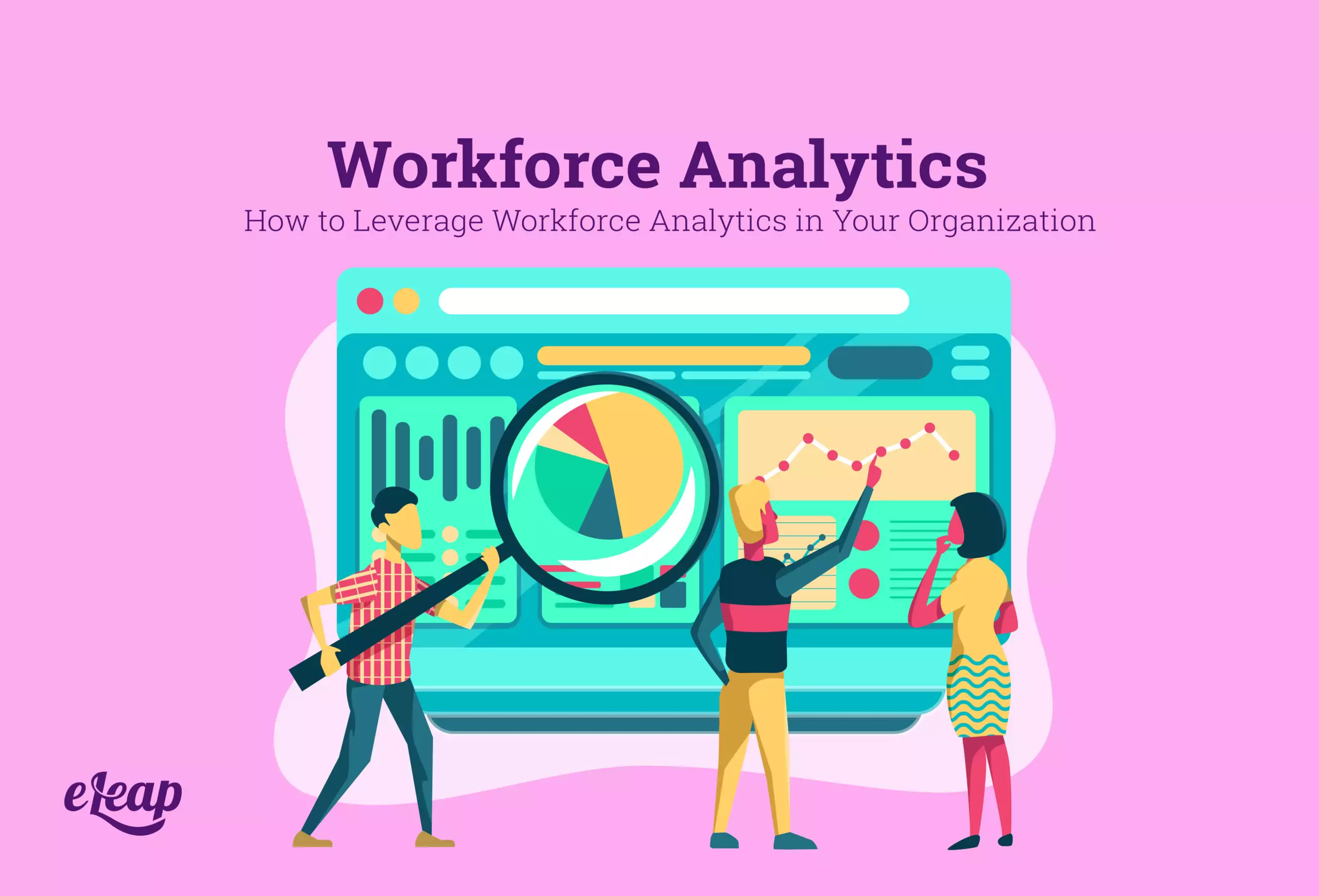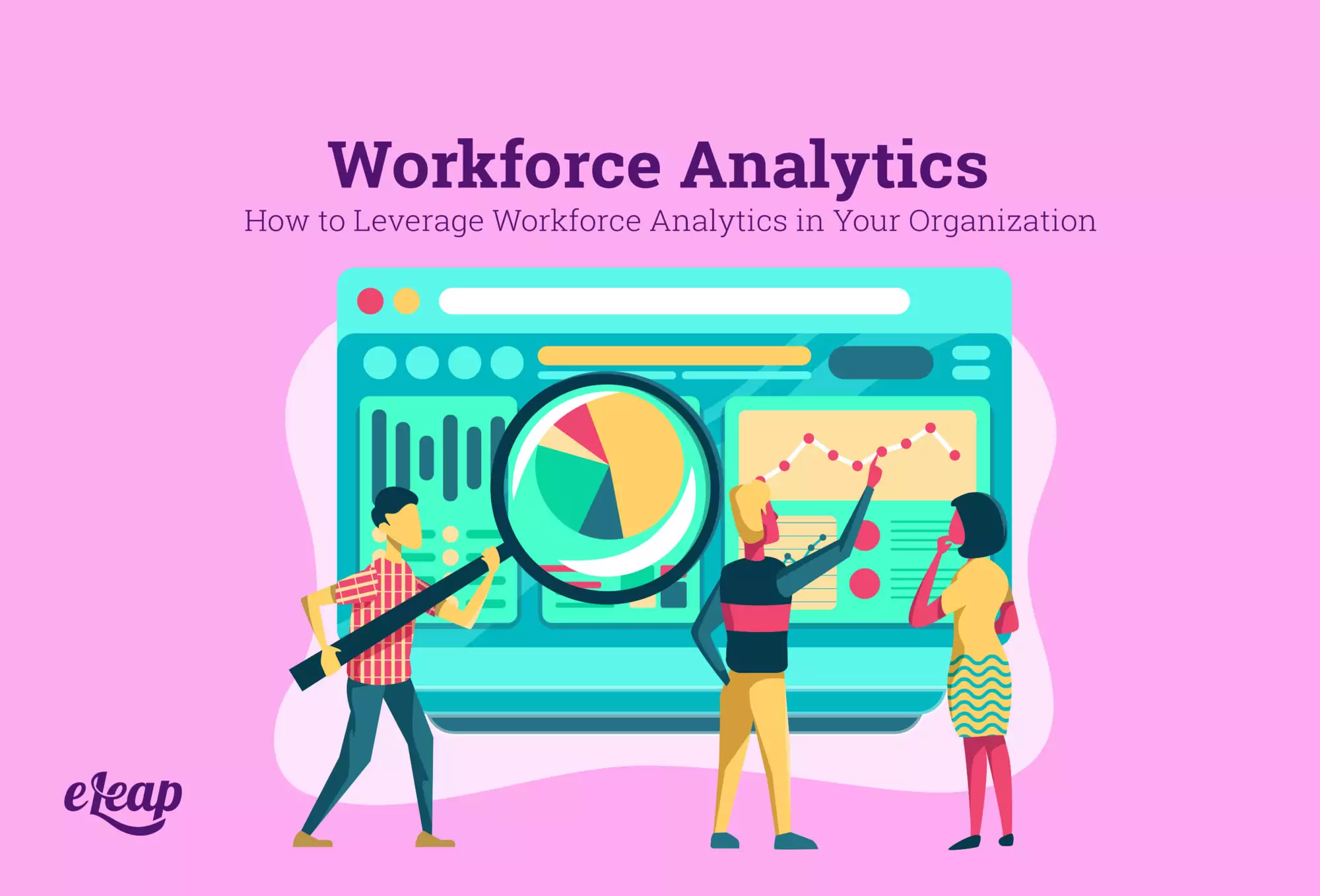Workforce Analytics
How to Leverage Workforce Analytics in Your Organization

Workforce analytics is a term that is often used in the world of HR. However, this term isn’t the same thing as HR and can be leveraged by organizations in other ways. There are benefits to workforce analytics at all levels of management. Here’s what you need to know about leveraging this data for your organization.

Workforce Analytics: Definition and Benefits
Workforce analytics is a term used to describe the approach of measuring behavior in the workplace. This means both employees and candidates for hire. Behavior analysis is used to help improve overall performance in the business.
Some examples of how this data can help managers include:
- It can help you predict a candidate’s success in a specific position.
- It can predict turnover for a specific role and help avoid it.
- It can test policies and procedures in the workplace so that you can tweak them for efficacy.
- It can help you understand what type of workplace needs there may be in the future for your organization.
Using workforce analytics can also be of benefit to the employees themselves. Some of these benefits include:
- Data can help give them the feedback they need to improve their performance.
- They may find it easier to match their needs with the organization’s goals.
- They can develop their own strengths and potential better.
- The learning solutions offered to them will be better matched with their performance.
- They’ll feel more connected to the organization’s objectives.
But what kind of data is obtained in workforce analytics, and how can you use it?
Types of Workforce Analytics
The types of data that are considered workforce analytics are more technology-driven rather than the “people analytics” of traditional HR. There are four types of data that this area looks at:
- Employee Engagement: One of the areas that workforce analytics track is how committed and productive your employees are behaving. This data is, in truth, more a measure of the leadership in your organization rather than a measure of the employees’ performance. Great leaders inspire engaged team members who feel connected to the organization’s vision.
- Training: The second area to track is how efficient and effective workplace training is for employees. This helps you plan and design future training programs, and makes the team feel more skillful as they grow in their positions. It also allows you to track the progress you’re making towards organizational learning objectives.
- Turnover Rate: Next, workplace analytics keeps a close eye on the churn rate of your organization. This does help to inform the area of employee engagement and gives you an overview of your company culture. A positive culture typically has a low turnover rate. If you see a higher rate, you know that you need to address something.
- Absenteeism: The final area that workplace analytics will monitor is how often your employees are absent. There are specific trends that are normal in most industries, such as an uptick in absences around holidays. However, if you notice a rising trend in absent employees, that may tell you that your team doesn’t feel connected to the organization’s objectives or vision.
How You Can Leverage This Data
Now that you know what areas workforce analytics monitor, you can begin to apply this information to your decisions in the following ways:
- Recruiting Suitable Candidates: You can use the data you’ve collected from these analytics to scan resumes for the right keywords and information. You can also use this data to create or analyze behavioral questions as part of your application process. By knowing what points to look for on each resume, you’ll automate this task and make it far easier to identify the best candidates.
- Managing Existing Employees: The data you collect regarding engagement and learning objectives can help you set the right benchmarks for performance. It’s far easier to see where leadership needs to focus more efforts when you can easily track the team’s progress based on measurable goals. You can also more easily pair high-performing employees with suitable projects and tasks to take advantage of their skills and interest.
- Employee Retention: Finally, you can use workforce analytics data to retain employees and keep them engaged longer. When you have data showing what sort of behavior is common right before a turnover, you can monitor for this behavior and step in to resolve issues before they become overwhelming.
Steps for Implementing Workforce Analytics
To get started collecting and analyzing this data, here are four steps:
- Determine one goal to accomplish with analytics for now. Trying to track too many things at once will lead to failure. Do you want to track employee engagement, prevent churn, or improve your learning objectives?
- Decide what information you’ll need to collect to meet the goal you chose. For example, if you want to improve your employee training program, consider tracking the completion rates of your current training modules.
- Decide what will be considered the benchmark for success in the data collected. In our example, you are tracking completion rates for current training modules. The benchmark for success might be completing an entire training course.
- Finally, determine how exactly the data will be communicated and analyzed. To continue the example above, consider what the data for completion rates will be compared with. You wanted to improve your training program, but why? Was it to increase productivity? In that case, you will need to compare successful completion rates with productivity rates to discover any correlations.
Using Workforce Analytics in Your Organization
The most crucial aspect of using this data is to ensure that your stakeholders and your employees see the process. Allowing all parties involved to understand why the data matters is the best way to encourage self-reporting and analyzing.
Workforce analytics data is not the same as HR analytics data. Still, it can give you a lot of information to help you manage the number one resource of your organization: the people. Using this data is a great way to improve your office culture.